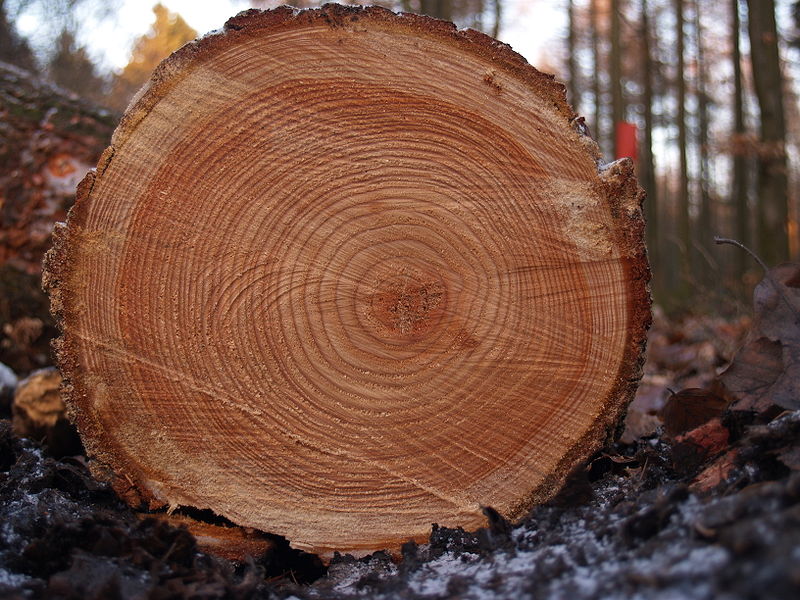We're open daily! View holiday hours
Science News
Cosmic Rays in Tree Rings
June 7, 2012

The information that trees store in their rings is amazing! We all know you can tell the age of a tree by its rings, but researchers can also look at tree rings to learn more about historical events and past climate.
As reported this week in Nature, a team of Japanese scientists discovered that tree rings also tell of cosmic events.
The researchers examined the tree rings of two cedar trees and discovered something odd around 1200 years ago—an elevated presence of carbon-14.
ScienceNOW explains the significance of carbon-14:
This indicates that cosmic rays—high-speed, charged particles from space—bombarded our planet and converted some atmospheric nitrogen-14 into carbon-14.
Not only did the researchers find this carbon-14 in the two Japanese trees, they also detected it in tree rings in North America and Europe around the same years—774 and 775.
Where did these cosmic rays come from? The two likely sources are solar flares and supernovae, but the researchers doubt it was either. Solar flares are too weak to produce such significant rays and a larger superflare would have destroyed the ozone—wreaking obvious havoc with life on Earth.
A local supernova is also highly unlikely because if it were big enough to produce these cosmic rays, it would have left remnants still visible today.
In addition to the tree rings, another team of researchers found evidence of these cosmic rays around the same time period in Antarctic ice cores. The evidence there isn’t carbon-14 but beryllium-10. According to National Geographic News:
Like carbon-14, beryllium-10 is produced by collisions of cosmic rays with atoms in the atmosphere. The radioactive atoms then attach to airborne particles, which can get incorporated into rainfall or snowfall…
So while there is plenty of evidence of this event, there’s no clear cause… yet.
Image: Arnoldius/Wikipedia